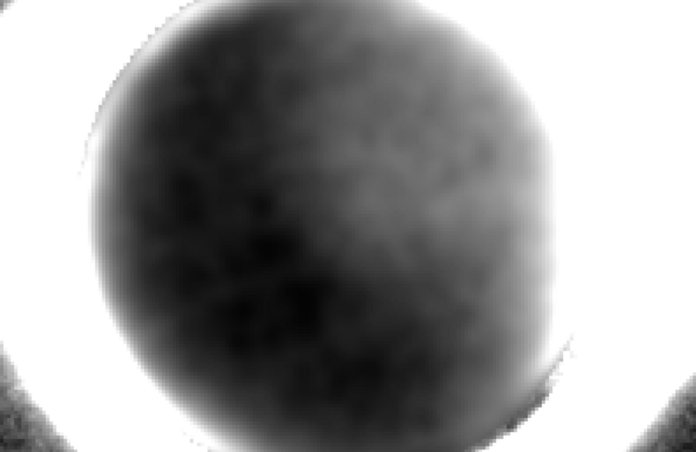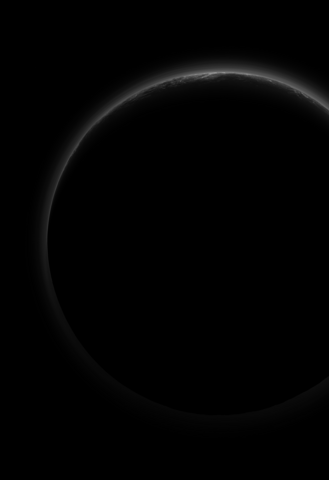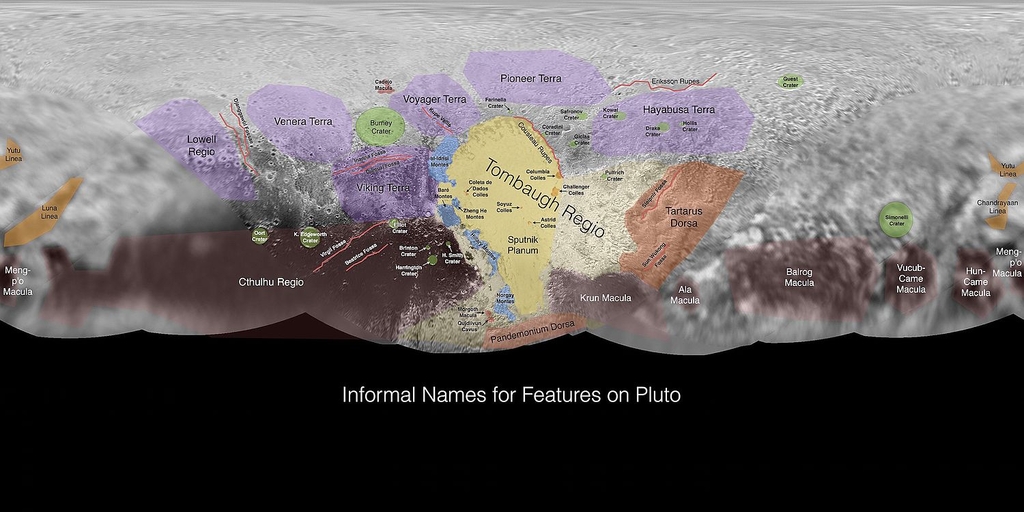Pluto's far side exposed by its Moon

Light from Pluto's moon Charon illuminates features of the dwarf planet's dark side.

New Horizons was launched in January 2006 and flew by Pluto in 2015. The dwarf planet is so far away from Earth that it takes 4 and a half hours to communicate with the probe as it passes by ! Anyway, what we’re most interested in here is the Long-Range Reconnaissance Imager telescopic camera (LORRI), one of the 7 instruments carried by the probe, which notably has the tasks to map Pluto's far side, search for traces of dust rings around Pluto and to provide geologic data.

To observe the far side, the researchers used an ingenious method: they used Pluto’s largest moon Charon as their light source. Charon is so close to Pluto that the light it reflects off onto its (dwarf) planet’s surface is equivalent to about half the light received by Pluto’s illuminated side. Over the course of 19 minutes, then, LORRI obtained 360 deep images of Pluto’s nightside hemisphere.
One of the astronomers involved describes this imaging technique as being “like driving in a car with a dirty window, looking into the sun without a sun visor, trying to read a street sign” – this is why it took years before the processed image that you can see as the cover image could be released, clean of defaults. In particular, the Sun’s light was way overexposed, i.e., LORRI collected too much light for the data to be meaningful in certain regions. Another thing to consider was that the spacecraft was moving away from Pluto while taking the images, leading to blurs. On top of that, there were a few additional steps that were taken to reconstruct the image, including the removal of a background of scattered sunlight, and of course, averaging the 360 frames to a single output.
Simulated noise level for the final Charon-light image Yellow: Portions of Pluto
illuminated by sunlight (overexposed)Scattered sunlight background that needs to be subtracted
Previous attempts at mapping Pluto have revealed features like the Balrog and Cthulhu Macula, dark spots thoughts to be composed of hydrocarbons called tholins. Note that because the first really detailed images of all of Pluto’s surface have only reached us in the past few years from New Horizons, the nomenclature hasn’t actually been officialised by the Working Group for Planetary System Nomenclature. After analysing this image, the researchers found evidence for the presence of a deposit of nitrogen or methane ice from a brighter “spot” on the far side.

Intriguingly, they also discovered that the dwarf’s North Pole is much brighter than the regions near the South Pole. Considering that New Horizons flew by at the end of the Plutonian southern summer, this could imply seasonal variations on the surface, whereby the ice deposits don’t survive the (relatively) warm season – by relatively, I mean somewhere around -200 °C. Because one Plutonian day lasts 153 days and its year about 248 Earth years, things are not just cold but also quite slow: the aforementioned ice deposit may well be ice that’s migrating from Northern to Southern latitudes as Pluto gets deeper into its winter, picking up nitrogen frost freezing out of the atmosphere as it goes.
Unfortunately, this seasonality also means that the spot shouldn’t get a Tolkienian or Lovecraftian name …
Cover Image: Pluto's Far Side, NASA/Johns Hopkins APL/Southwest Research Institute/NOIRLab
Image Credits:
1 -Dark Side of Pluto, NASA/JHUAPL/SwRI
2 - New Horizons, NASA/Johns Hopkins University Applied Physics Laboratory/Southwest Research Institute
3, 4, 5 & 6 - Figures from Lauer et al., 2021
7 - Informal names of Plutonian features, JPL/NASA
